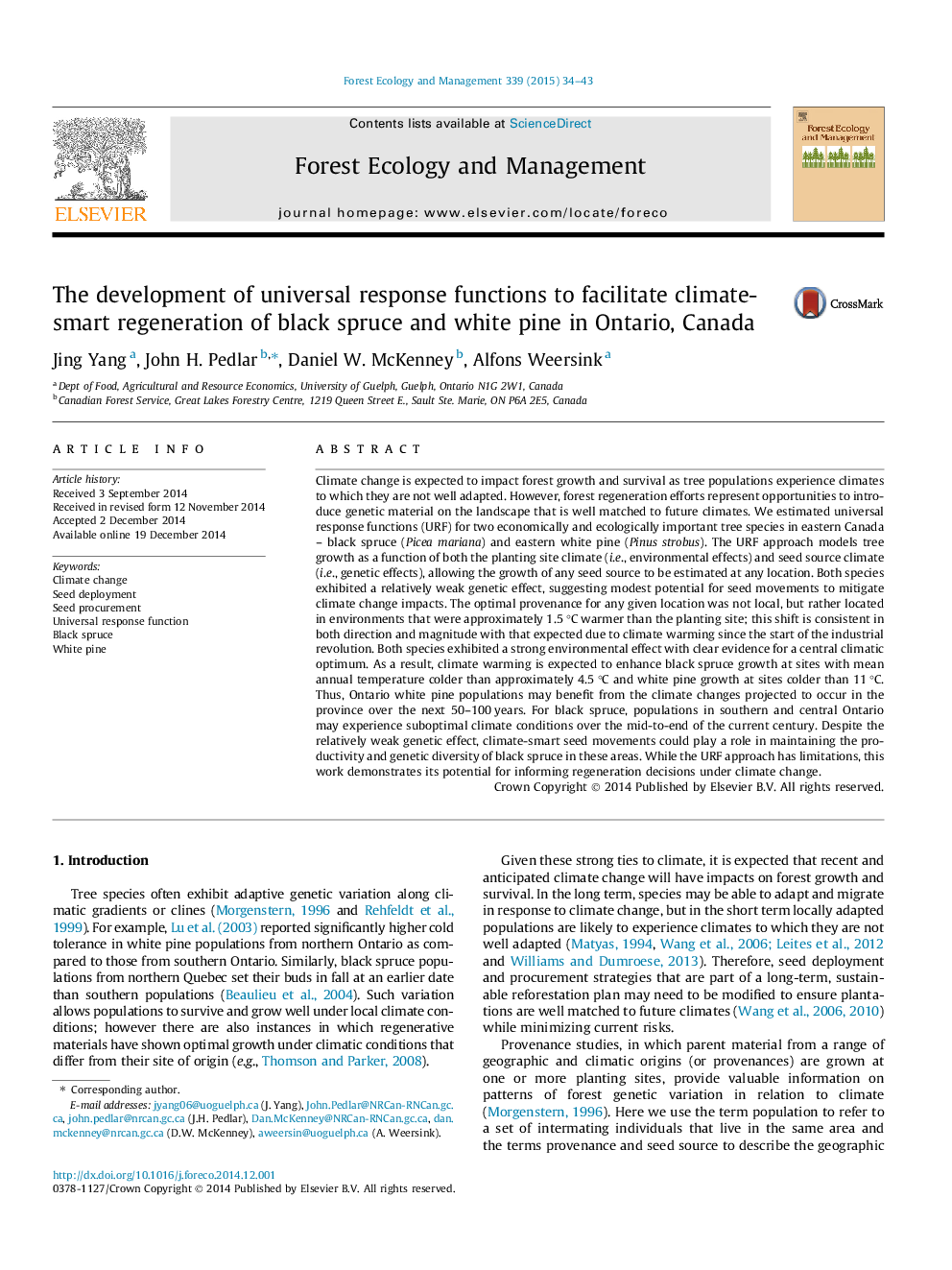| کد مقاله | کد نشریه | سال انتشار | مقاله انگلیسی | نسخه تمام متن |
|---|---|---|---|---|
| 86399 | 159184 | 2015 | 10 صفحه PDF | دانلود رایگان |
• We developed universal response functions for black spruce and white pine.
• Both species exhibited strong climatic optima and weak levels of local adaptation.
• White pine growth is projected to increase across Ontario under climate change.
• Black spruce growth is projected to decline in southern Ontario under climate change.
• Climate-smart seed movements could soften climate change impacts on black spruce.
Climate change is expected to impact forest growth and survival as tree populations experience climates to which they are not well adapted. However, forest regeneration efforts represent opportunities to introduce genetic material on the landscape that is well matched to future climates. We estimated universal response functions (URF) for two economically and ecologically important tree species in eastern Canada – black spruce (Picea mariana) and eastern white pine (Pinus strobus). The URF approach models tree growth as a function of both the planting site climate (i.e., environmental effects) and seed source climate (i.e., genetic effects), allowing the growth of any seed source to be estimated at any location. Both species exhibited a relatively weak genetic effect, suggesting modest potential for seed movements to mitigate climate change impacts. The optimal provenance for any given location was not local, but rather located in environments that were approximately 1.5 °C warmer than the planting site; this shift is consistent in both direction and magnitude with that expected due to climate warming since the start of the industrial revolution. Both species exhibited a strong environmental effect with clear evidence for a central climatic optimum. As a result, climate warming is expected to enhance black spruce growth at sites with mean annual temperature colder than approximately 4.5 °C and white pine growth at sites colder than 11 °C. Thus, Ontario white pine populations may benefit from the climate changes projected to occur in the province over the next 50–100 years. For black spruce, populations in southern and central Ontario may experience suboptimal climate conditions over the mid-to-end of the current century. Despite the relatively weak genetic effect, climate-smart seed movements could play a role in maintaining the productivity and genetic diversity of black spruce in these areas. While the URF approach has limitations, this work demonstrates its potential for informing regeneration decisions under climate change.
Journal: Forest Ecology and Management - Volume 339, 1 March 2015, Pages 34–43
